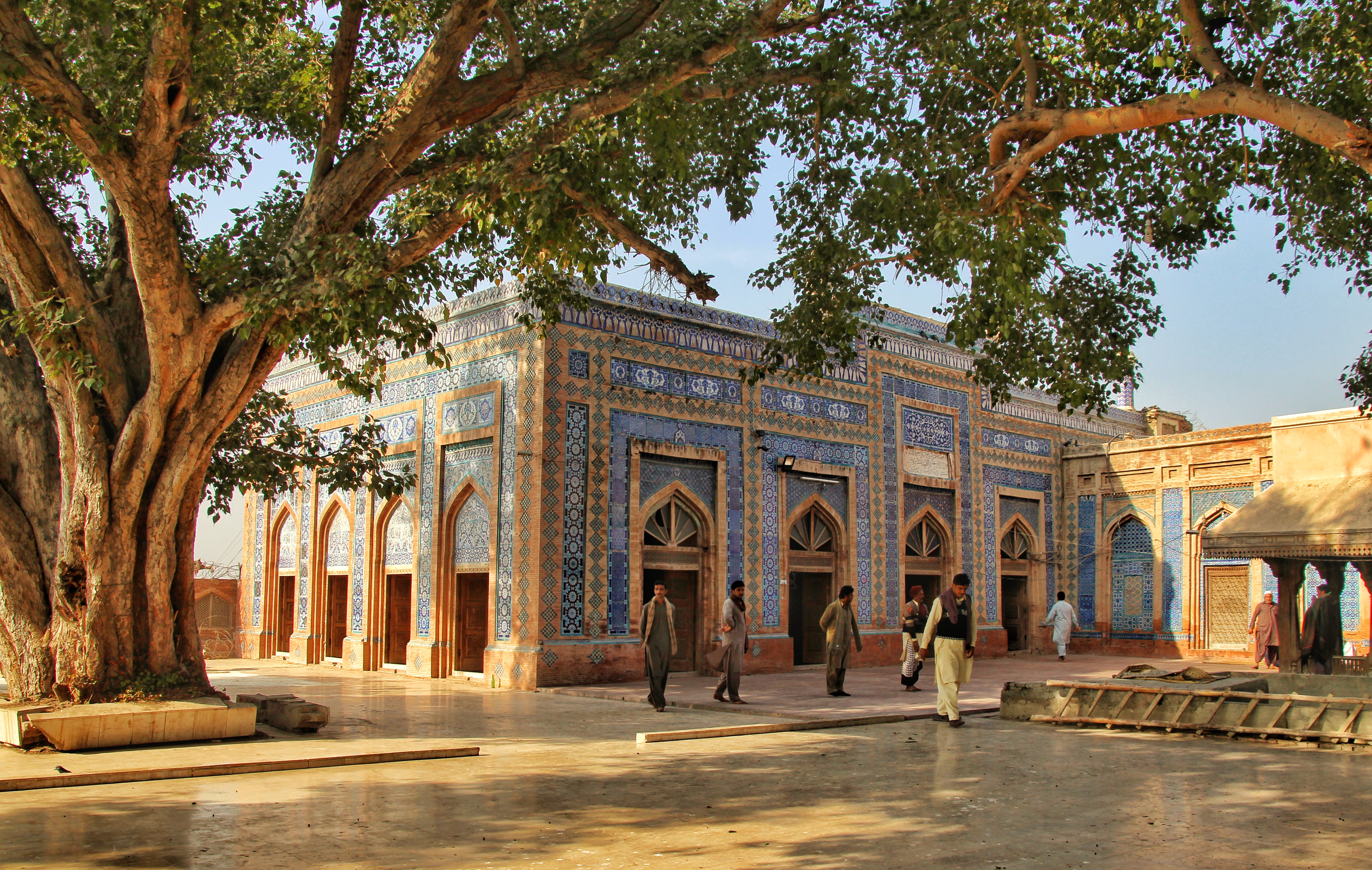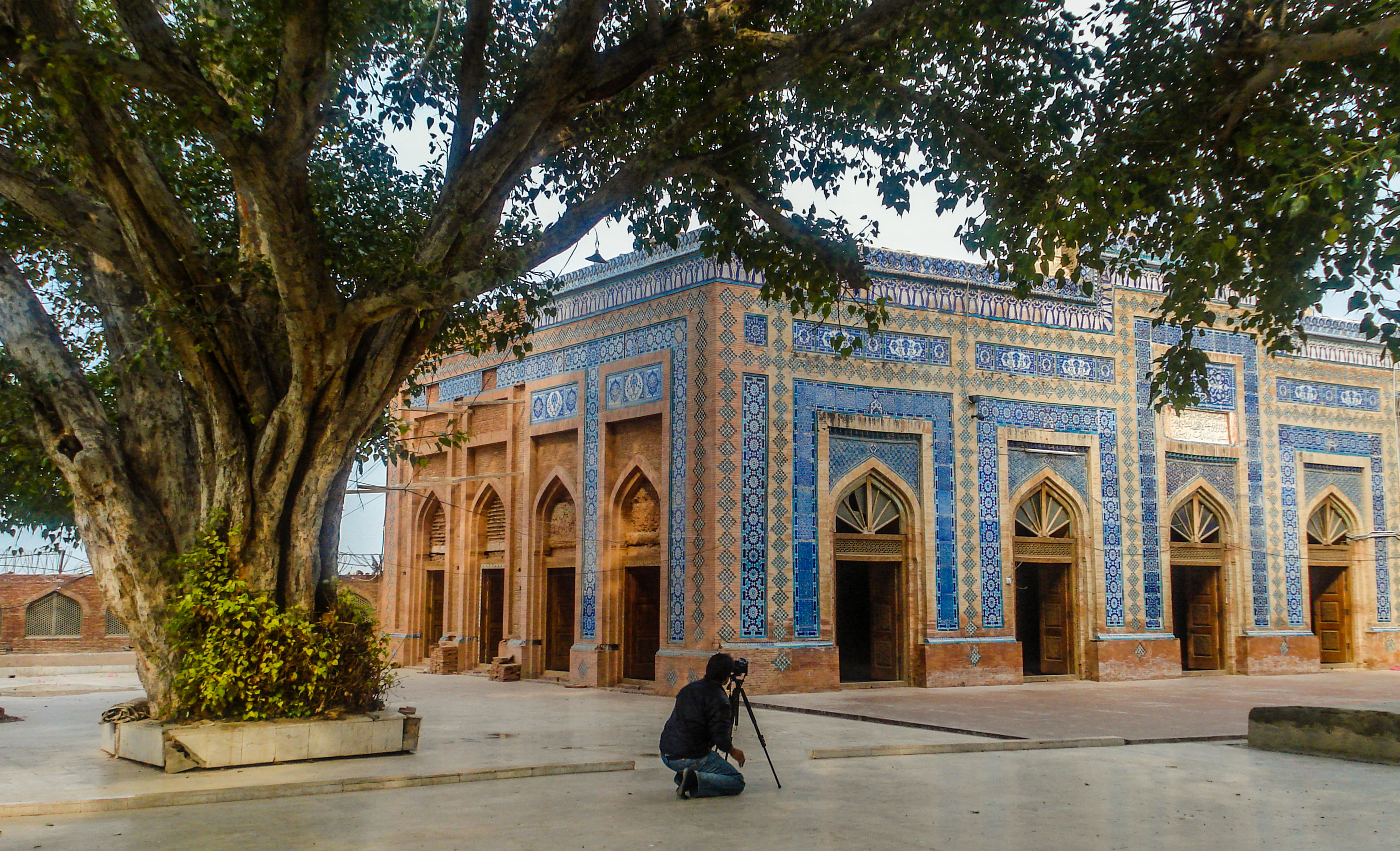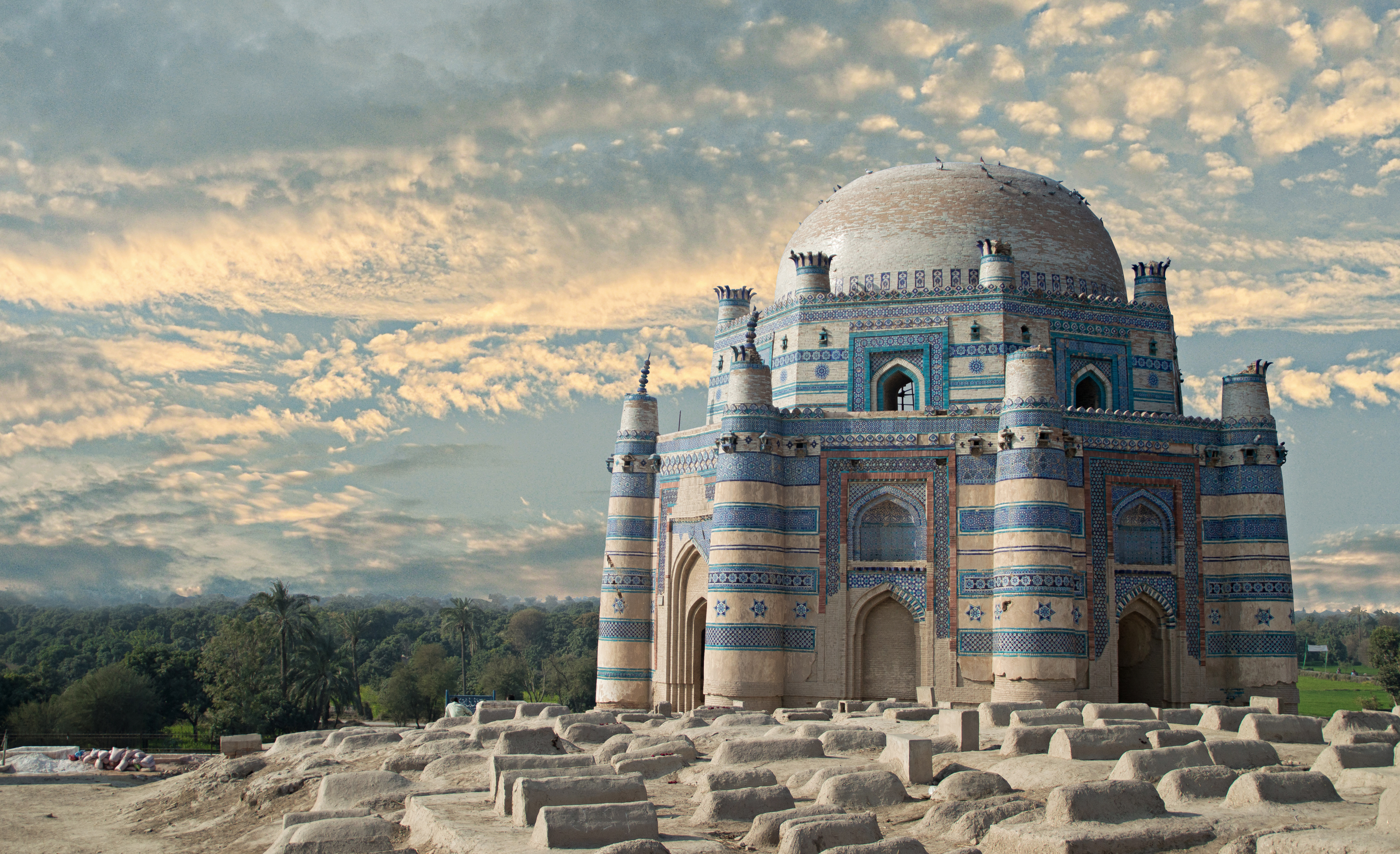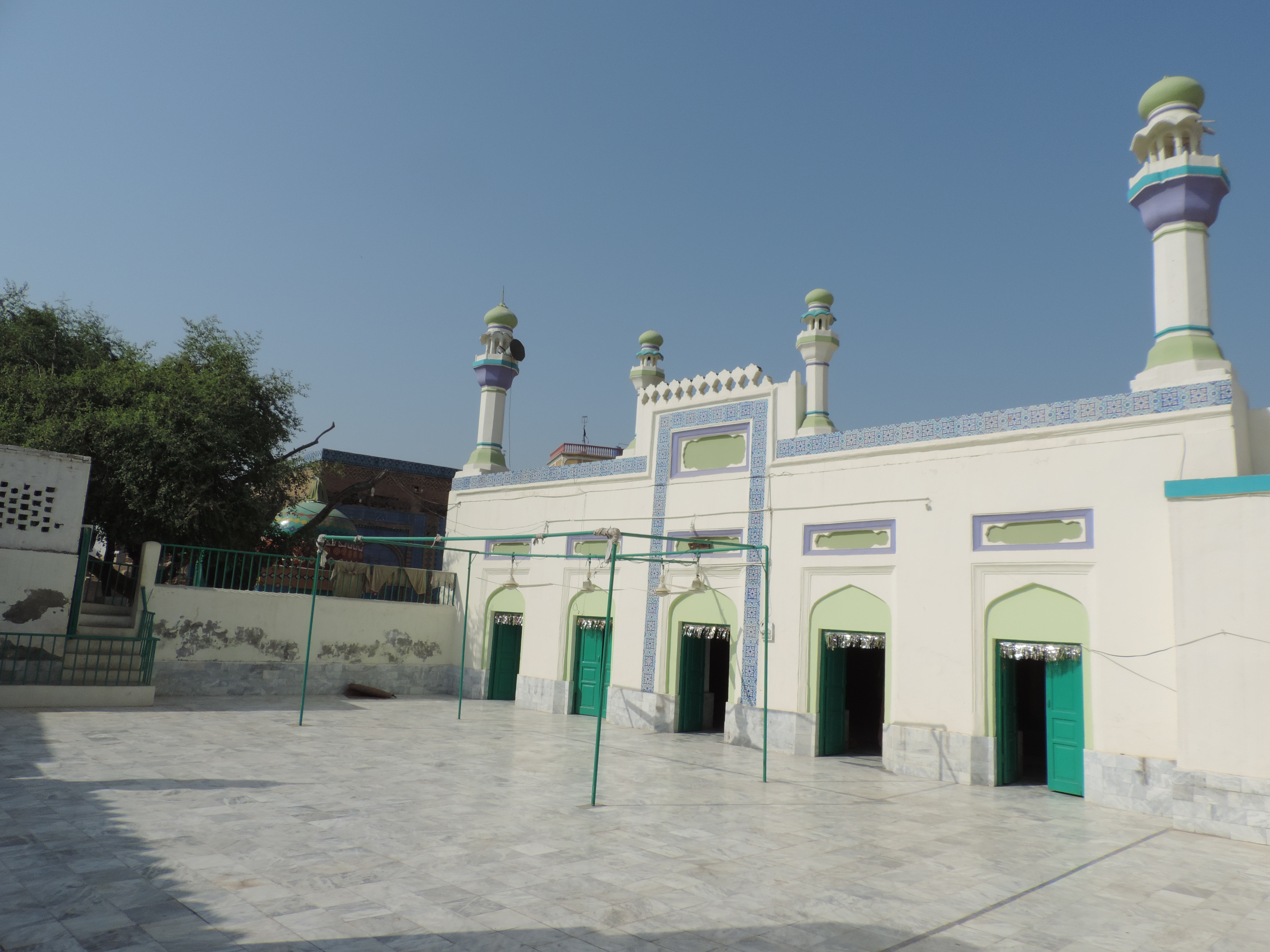|
Uch
Uch ( pa, ; ur, ), frequently referred to as Uch Sharīf ( pa, ; ur, ; ''"Noble Uch"''), is a historic city in the southern part of Pakistan's Punjab province. Uch may have been founded as Alexandria on the Indus, a town founded by Alexander the Great during his invasion of the Indus Valley. Uch was an early stronghold of the Delhi Sultanate during the Muslim conquest of the subcontinent. Also known as home for the Naqvi/Bukhari’s after the migration from Bukhara. Uch was a regional metropolitan centre between the 12th and 17th centuries, and became refuge for Muslim religious scholars fleeing persecution from other lands. Though Uch is now a relatively small city, it is renowned for its intact historic urban fabric, and for its collection of shrines dedicated to Muslim mystics(Sufis) from the 12-15th centuries that are embellished with extensive tile work, and were built in the distinct architectural style of southern Punjab. Etymology Uch was previous known by t ... [...More Info...] [...Related Items...] OR: [Wikipedia] [Google] [Baidu] |
Jalaluddin Surkh-Posh Bukhari
Jalaluddin "Surkh-Posh" Bukhari ( fa, , c. 595-690 AH, 1190 – 1295 CE) was a Sufi saint and missionary belonging to the Sufi order of Hussaini Jalali. Names Bukhari, a family name, is derived from the location of his birth city of Bukhara in the ancient administrative region of Bukhara Province Uzbekistan.Yasin M. and Asin M. (Ed."Reading in Indian History."Atlantic 1988. p41. Accessed in English at Google Books on 23 June 2017 Bukhari is a Sayyid from Naqvi denomination, a descendant of the Islamic prophet Muhammad through his grandsons Husayn ibn Ali and Hasan ibn Ali. Bukhari was born as Jalaluddin Haider. Bukhari was nicknamed ''Surkh-Posh'' ("clad in red") because he often wore a red mantle. Over times, he has been referred to by a number of names and titles: Jalal Ganj; Mir Surkh (Red Leader); Sharrifullah (Noble of Allah); Mir Buzurg (Big Leader); Makhdum-ul-Azam; Jalal Akbar; Azimullah; Sher Shah (Lion King); Jalal Azam and Surkh-Posh Bukhari. With formal ho ... [...More Info...] [...Related Items...] OR: [Wikipedia] [Google] [Baidu] |
Tomb Of Bibi Jawindi
The Tomb of Bibi Jawindi ( ur, ) is one of the five monuments in Uch Sharif, Punjab, Pakistan, that are on the tentative list of the UNESCO World Heritage Sites. Dating back to the 15th century, the shrine was built in the spirit of the historical Sufi premier Bibi Jawindi of the Suhrawardiyyah order, a strictly hegemonistic Sunni school of theosophical thought which puts particular emphasis on the Shafi’i school of classical jurisprudence in the context of its interpretation of the Sharia. Jaw Indo was great-granddaughter to Jahaniyan Jahangasht, a famous Sufi saint in his own right. Location The site is located in the south-west corner of Uch, a historical city founded by Alexander the Great, in the Bahawalpr state and Punjab province of Pakistan. Uch, locally known as Uch Sharif, is known as the home of the "shrine culture" because of its cultural significance and the presence of several monuments and shrines. Architecture Built of glazed bricks on an octagonal base with tu ... [...More Info...] [...Related Items...] OR: [Wikipedia] [Google] [Baidu] |
Multan
Multan (; ) is a city in Punjab, Pakistan, on the bank of the Chenab River. Multan is Pakistan's seventh largest city as per the 2017 census, and the major cultural, religious and economic centre of southern Punjab. Multan is one of the oldest continuously inhabited cities in Asia, with a history stretching deep into antiquity. The ancient city was the site of the renowned Multan Sun Temple, and was besieged by Alexander the Great during the Mallian Campaign. A historic cultural centre of the wider Punjab, it was conquered by the Ummayad military commander Muhammad bin Qasim. The city later became independent as the capital of the Emirate of Multan in 855 A.D., before subsequently coming under the rule of empires such as the Ghaznavids, the Ghurids and the Mamluks. In 1445, it became capital of the Langah Sultanate. In 1526, it was conquered by the Mughal Empire. Multan Subah would become one of the largest provinces of the Mughal Empire when it was created by admin ... [...More Info...] [...Related Items...] OR: [Wikipedia] [Google] [Baidu] |
Punjab (Pakistan)
Punjab (; , ) is one of the four provinces of Pakistan. Located in central-eastern region of the country, Punjab is the second-largest province of Pakistan by land area and the largest province by population. It shares land borders with the Pakistani provinces of Khyber Pakhtunkhwa to the north-west, Balochistan to the south-west and Sindh to the south, as well as Islamabad Capital Territory to the north-west and Autonomous Territory of AJK to the north. It shares an International border with the Indian states of Rajasthan and Punjab to the east and Indian-administered Kashmir to the north-east. Punjab is the most fertile province of the country as River Indus and its four major tributaries Ravi, Jhelum, Chenab and Sutlej flow through it. The province forms the bulk of the transnational Punjab region, now divided among Pakistan and India. The provincial capital is Lahore — a cultural, modern, historical, economic, and cosmopolitan centre of Pakistan. Other major ... [...More Info...] [...Related Items...] OR: [Wikipedia] [Google] [Baidu] |
Punjab, Pakistan
Punjab (; , ) is one of the four provinces of Pakistan. Located in central-eastern region of the country, Punjab is the second-largest province of Pakistan by land area and the largest province by population. It shares land borders with the Pakistani provinces of Khyber Pakhtunkhwa to the north-west, Balochistan to the south-west and Sindh to the south, as well as Islamabad Capital Territory to the north-west and Autonomous Territory of AJK to the north. It shares an International border with the Indian states of Rajasthan and Punjab to the east and Indian-administered Kashmir to the north-east. Punjab is the most fertile province of the country as River Indus and its four major tributaries Ravi, Jhelum, Chenab and Sutlej flow through it. The province forms the bulk of the transnational Punjab region, now divided among Pakistan and India. The provincial capital is Lahore — a cultural, modern, historical, economic, and cosmopolitan centre of Pakistan. Other major cit ... [...More Info...] [...Related Items...] OR: [Wikipedia] [Google] [Baidu] |
Chenab River
The Chenab River () is a major river that flows in India and Pakistan, and is one of the 5 major rivers of the Punjab region. It is formed by the union of two headwaters, Chandra and Bhaga, which rise in the upper Himalayas in the Lahaul region of Himachal Pradesh, India. The Chenab flows through the Jammu region of Jammu and Kashmir, India into the plains of Punjab, Pakistan, before ultimately flowing into the Indus River. The waters of the Chenab were allocated to Pakistan under the terms of the Indus Waters Treaty. India is allowed non-consumptive uses such as power generation. The Chenab River is extensively used in Pakistan for irrigation. Its waters are also transferred to the channel of the Ravi River via numerous link canals. Name The Chenab river was called ' ( sa, असिक्नी) in the Rigveda (VIII.20.25, X.75.5). The name meant that it was seen to have dark-coloured waters. The term Krishana is also found in the Atharvaveda. A later form of Askikni was ... [...More Info...] [...Related Items...] OR: [Wikipedia] [Google] [Baidu] |
Jahaniyan Jahangasht
Mīr Sayyid Jalāl ad-Dīn an-Naqwī al-Bukhārī ( fa, ; 1308-1384), better known as Jahāniyān Jahāngasht ( fa, ), was a Sufi saint from South Asia. Biography Mir Sayyid Jalaluddin Bukhari was born into a Muslim family on 8th February 1308 AD (14 Shaban 707 AH). His father, Syed Ahmed Kabir, was the youngest son and chosen successor of Jalaluddin Surkh-Posh of Bukhara.Marat-e-Jalali (مرآت جلالی) by Syed Khalil Ahmed Bukhari Hassami, First Edition 1918, Allahabad, Second Edition 1999, Karachi. He was later given the title of ''Jahaniyan Jahangasht'' from which he gained prominence. He travelled to many countries, and visited Mecca 36 times in his life. He married the daughter of his half-uncle Sadruddin Muhammad Ghawth.Hassami S. K. A. B. ''Marat-e-Jalali (Red Clothed man from Bukhara)'' First Edition 1918, Allahabad, Second Edition 1999, Karachi. He visited Hazrat Pandua, the first capital of the Bengal Sultanate, where he led the janazah of Alaul Ha ... [...More Info...] [...Related Items...] OR: [Wikipedia] [Google] [Baidu] |
Delhi Sultanate
The Delhi Sultanate was an Islamic empire based in Delhi that stretched over large parts of the Indian subcontinent for 320 years (1206–1526).Delhi Sultanate Encyclopædia Britannica Following the invasion of by the Ghurid dynasty, five dynasties ruled over the Delhi Sultanate sequentially: the Mamluk dynasty (1206–1290), the Khalji dynasty (1290–1320), the [...More Info...] [...Related Items...] OR: [Wikipedia] [Google] [Baidu] |
Alexandria On The Indus
Alexandria on the Indus ( el, Ἀλεξάνδρεια ἐπὶ Ἰνδῷ, likely modern Uch, Pakistan) was a city founded by Alexander the Great at the junction of the Indus and the Acesines river. Arrian tells that colonists, mainly Thracian veterans and natives, were settled there. The satrap of the west bank of the Indus, Philip, son of Machatas, was put in charge of building the city: :He (Alexander) ordered him (Philip) to found a city there, just at the meeting of the two rivers, as he expected it would be great and famous in the world, and dockyards to be built. Arrian, ''Anabasis'', VI.15.3 Today, the remains of the Greek town are thought to be inside the citadel mound, although a shift in the river has caused significant damage to the mound. A UNESCO The United Nations Educational, Scientific and Cultural Organization is a List of specialized agencies of the United Nations, specialized agency of the United Nations (UN) aimed at promoting world peace and sec ... [...More Info...] [...Related Items...] OR: [Wikipedia] [Google] [Baidu] |
Mahmud Of Ghazni
Yamīn-ud-Dawla Abul-Qāṣim Maḥmūd ibn Sebüktegīn ( fa, ; 2 November 971 – 30 April 1030), usually known as Mahmud of Ghazni or Mahmud Ghaznavi ( fa, ), was the founder of the Turkic Ghaznavid dynasty, ruling from 998 to 1030. At the time of his death, his kingdom had been transformed into an extensive military empire, which extended from northwestern Iran proper to the Punjab in the Indian subcontinent, Khwarazm in Transoxiana, and Makran. Highly Persianized, Mahmud continued the bureaucratic, political, and cultural customs of his predecessors, the Samanids. He established the ground for a future Persianate state in Punjab, particularly centered on Lahore, a city he conquered. His capital of Ghazni evolved into a significant cultural, commercial, and intellectual centre in the Islamic world, almost rivalling the important city of Baghdad. The capital appealed to many prominent figures, such as al-Biruni and Ferdowsi. Mahmud ascended the throne at the age o ... [...More Info...] [...Related Items...] OR: [Wikipedia] [Google] [Baidu] |
Alexander Cunningham
Major General Sir Alexander Cunningham (23 January 1814 – 28 November 1893) was a British Army engineer with the Bengal Engineer Group who later took an interest in the history and archaeology of India. In 1861, he was appointed to the newly created position of archaeological surveyor to the government of India; and he founded and organised what later became the Archaeological Survey of India. He wrote numerous books and monographs and made extensive collections of artefacts. Some of his collections were lost, but most of the gold and silver coins and a fine group of Buddhist sculptures and jewellery were bought by the British Museum in 1894. He was also the father of mathematician Allan Cunningham. Early life and career Cunningham was born in London in 1814 to the Scottish poet Allan Cunningham (1784–1842) and his wife Jean née Walker (1791–1864). Along with his older brother, Joseph, he received his early education at Christ's Hospital, London. Through the influ ... [...More Info...] [...Related Items...] OR: [Wikipedia] [Google] [Baidu] |
Thrace
Thrace (; el, Θράκη, Thráki; bg, Тракия, Trakiya; tr, Trakya) or Thrake is a geographical and historical region in Southeast Europe, now split among Bulgaria, Greece, and Turkey, which is bounded by the Balkan Mountains to the north, the Aegean Sea to the south, and the Black Sea to the east. It comprises southeastern Bulgaria (Northern Thrace), northeastern Greece ( Western Thrace), and the European part of Turkey ( East Thrace). The region's boundaries are based on that of the Roman Province of Thrace; the lands inhabited by the ancient Thracians extended in the north to modern-day Northern Bulgaria and Romania and to the west into the region of Macedonia. Etymology The word ''Thrace'' was first used by the Greeks when referring to the Thracian tribes, from ancient Greek Thrake (Θρᾴκη), descending from ''Thrāix'' (Θρᾷξ). It referred originally to the Thracians, an ancient people inhabiting Southeast Europe. The name ''Europe'' first referred ... [...More Info...] [...Related Items...] OR: [Wikipedia] [Google] [Baidu] |











